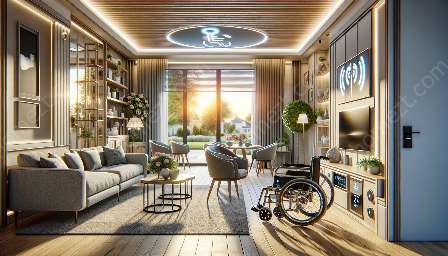Smart homes have revolutionized the way people live, offering convenience, security, and energy efficiency. When it comes to designing for disabled or elderly individuals, smart homes can provide a range of innovative solutions to enhance their quality of life. By integrating energy-efficient design principles, smart homes for disabled individuals can not only improve accessibility but also contribute to sustainability.
Understanding the Importance of Smart Home Design for Disabled Individuals
For individuals with disabilities, smart home technology can play a crucial role in fostering independence and ensuring a comfortable living environment. By incorporating features such as voice-activated controls, automated lighting, and smart door locks, smart homes can empower disabled individuals to manage their living spaces more effectively.
Key Elements of Energy-Efficient Design in Smart Homes for Disabled
Energy-efficient design in smart homes for disabled individuals encompasses various strategies and technologies aimed at optimizing energy usage while prioritizing accessibility and comfort. Some key elements include:
- Smart Thermostats: These devices enable precise temperature control and can be integrated with voice commands or smartphone apps, allowing disabled individuals to adjust the heating or cooling settings effortlessly.
- Automated Window Treatments: Motorized blinds or curtains can enhance privacy and regulate natural light, promoting energy efficiency while offering convenience for those with mobility impairments.
- Adaptive Lighting Systems: Smart lighting solutions with motion sensors and customizable brightness levels can cater to the specific needs of disabled individuals, creating a safe and well-lit environment.
- Energy Monitoring and Management: Smart home systems can provide real-time monitoring of energy usage, allowing residents to identify areas for improvement and make informed decisions to reduce energy consumption.
- Integrated Home Automation: By connecting various devices and systems, smart homes can optimize energy usage through synchronized operation, enhancing overall efficiency.
Benefits of Energy-Efficient Design for Disabled Individuals
The integration of energy-efficient design into smart homes for disabled individuals yields several benefits, including:
- Enhanced Comfort: Energy-efficient features contribute to a more comfortable and adaptive living environment, accommodating the diverse needs of disabled residents.
- Improved Accessibility: Smart home technology can enable greater independence and accessibility, providing tailored solutions for mobility, communication, and environmental control.
- Sustainability: Energy-efficient design promotes resource conservation and reduces utility costs, aligning with sustainable practices and environmental stewardship.
- Universal Design Principles: Incorporating features such as wide doorways, lever-style handles, and zero-step entryways to ensure accessibility for individuals with mobility challenges.
- Personalized Assistive Technologies: Tailoring smart home solutions to address the unique needs of disabled residents, from smart medical alert systems to voice-activated appliances, to enhance safety and convenience.
- Seamless Connectivity and Integration: Creating a cohesive ecosystem where different smart devices and assistive technologies work together intuitively, simplifying daily tasks and enhancing overall functionality.
The Role of Intelligent Home Design in Enhancing Accessibility and Functionality
Intelligent home design goes beyond energy efficiency, focusing on creating inclusive spaces that cater to the specific requirements of disabled or elderly individuals. Key considerations for intelligent home design in this context include:
Conclusion
Energy-efficient design in smart homes for disabled individuals represents a pivotal step towards creating inclusive, sustainable living environments. By leveraging the potential of smart technologies and intelligent home design principles, it is possible to enhance comfort, accessibility, and sustainability for individuals with disabilities, ultimately fostering greater independence and well-being.


